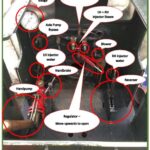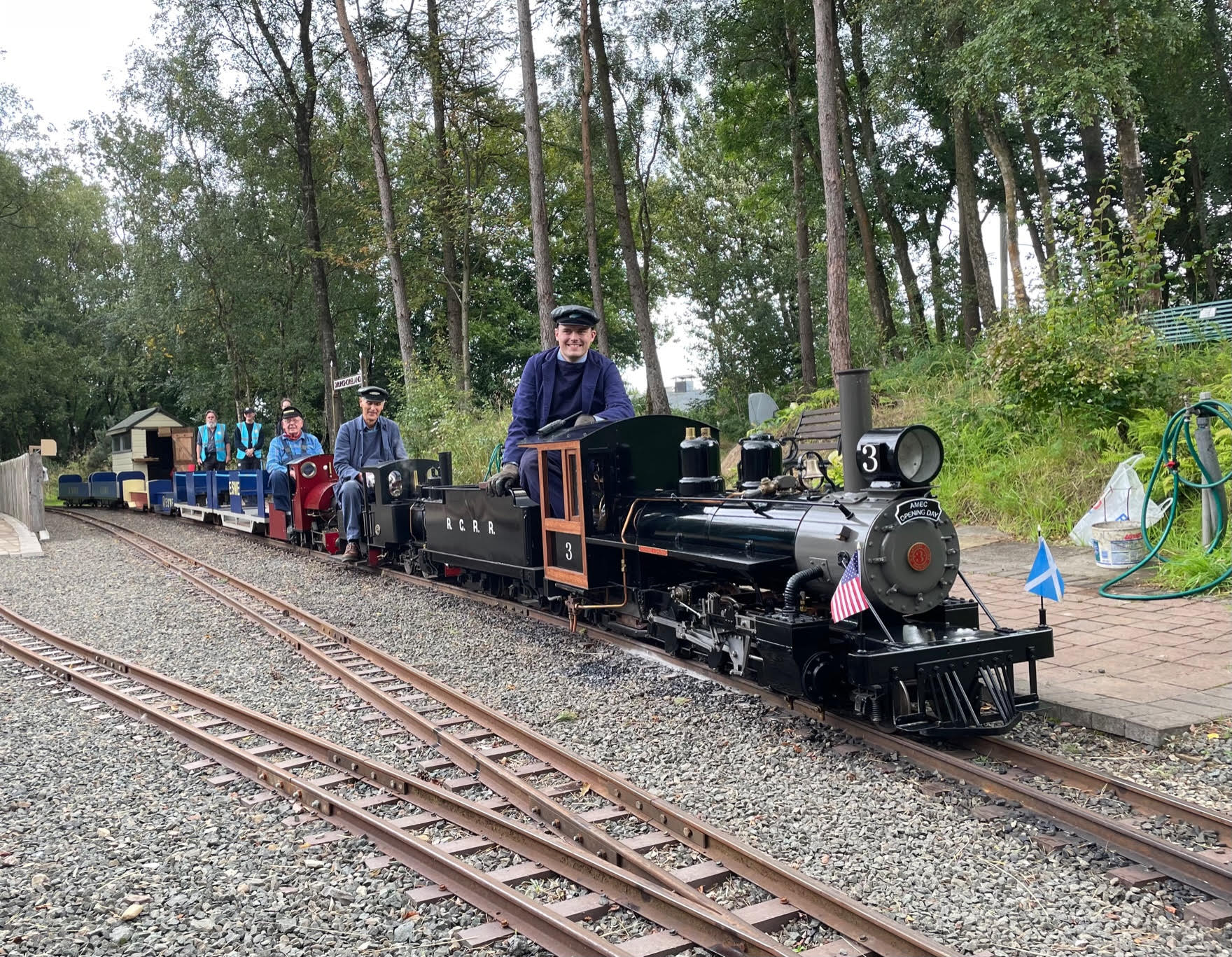 The Society own a 7¼” gauge ‘1366’ class GWR locomotive which is available for members to run.
The Society own a 7¼” gauge ‘1366’ class GWR locomotive which is available for members to run.
 Its primary use is at portable track events, such as gala days or events at Bo’ness.
Its primary use is at portable track events, such as gala days or events at Bo’ness.
 It is well able to operate at Almondell, but its load hauling capacity is limited & it does need good management of the fire & water level.
It is well able to operate at Almondell, but its load hauling capacity is limited & it does need good management of the fire & water level.
Daniel has taken the locomotive under his wing, which has greatly improved its running & reliability.
If you are going to be operating the locomotive please read the following, using the annotated diagram of the cab layout as a reference.
Operating the GWR pannier club locomotive
The loco is fitted with auto draincocks.
The whistle valve is located above the injector steam valves.
The Right-hand injector is currently at the time of writing this document 07/06/2022 operating perfectly: Turn the water valve from the 10:30 position (closed) to the 1:30 position (open) ¼ turn. Then open the steam valve (rh valve on the manifold) This injector should pick up almost instantly.
The left-hand injector follows the same procedure although it can be more temperamental.
If both injectors fail to pick up, make sure the tanks are filled as the water heats quickly due to the loco being a pannier tank.
Axle pump is operational simply tighten down the bypass valve to pump water into the boiler.
Start of the day
Filling the boiler requires removing the safety valve.
- Lift off the safety valve bonnet
- Using the Black double ended spanner in the club toolbox (black toolbox with red clasps and clear top usually located with or near the loco trolley) unscrew the safety valve (DO NOT LOSE THE WASHER)
- Fill the boiler till ½ gauge glass
- Replace safety valve and bonnet
- Whilst filling boiler fill pannier tanks
Lighting up follows the same procedure as any other loco Availability of paraffin sticks or charcoal is not guaranteed at this current time, please make sure to bring some.
Oiling
The loco has several oiling points. The eccentric oiling holes are inboard of the frames on the middle axle. These can be reached with the extra long oil can in the bottom of the club toolbox. Whilst using the long oil can the valve rods expansion links and pins can all be oiled.
Coupling and connection rods have the usual oiling points in the bushes.
Axle boxes can be oiled by using the short oil can and pressing the end into the counter sinks on the ends of the axles a couple pumps here is enough to force oil down this hole and into the axle boxes. (Not a feature seen on many locos) The lubricator takes ordinary steam oil and should already be filled.
The loco should steam freely given that an even layer of coal is built up in the firebox you will find that the coal is broken up very finely by the loco and I would recommend having new coal on top before this point.
Axle pump eccentric can be accessed for oiling by removing the cab floor in the same method to access the blowdown valve.
End of the day
The end of the day has less steps than the start.
- Important: – Please make sure to blow down the boiler. The blowdown valve can be accessed by removing the cab floor and requires a 4ba spanner to open. To remove the cab floor, unscrew the handbrake stand and the handbrake screw from its nut. This will allow the cab floor to be slid out from under the rear bunker. The blowdown valve can be opened at around 40psi and gradually opened more as the pressure drops.
- Drop fire. This can be done by pulling out the ashpan pin located between the mid and rear wheels. The grate and ashpan should at this point just about drop on its own if not use the poker to push it out through the fire hole. The rear of the loco may require lifting off the dropped ash pan. Lift by the buffer stocks.
- Make sure before the loco cools down that all valves are not tightly closed
- Tanks can be left to empty by having the injector water valves open
- Place the ashpan grate and grate pin inside the cab after cooling
Cleaning of tubes and smokebox ash can take place once the loco is returned to the club house.



